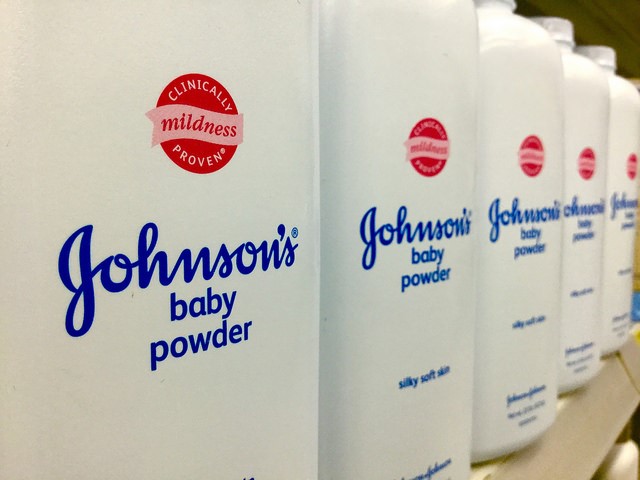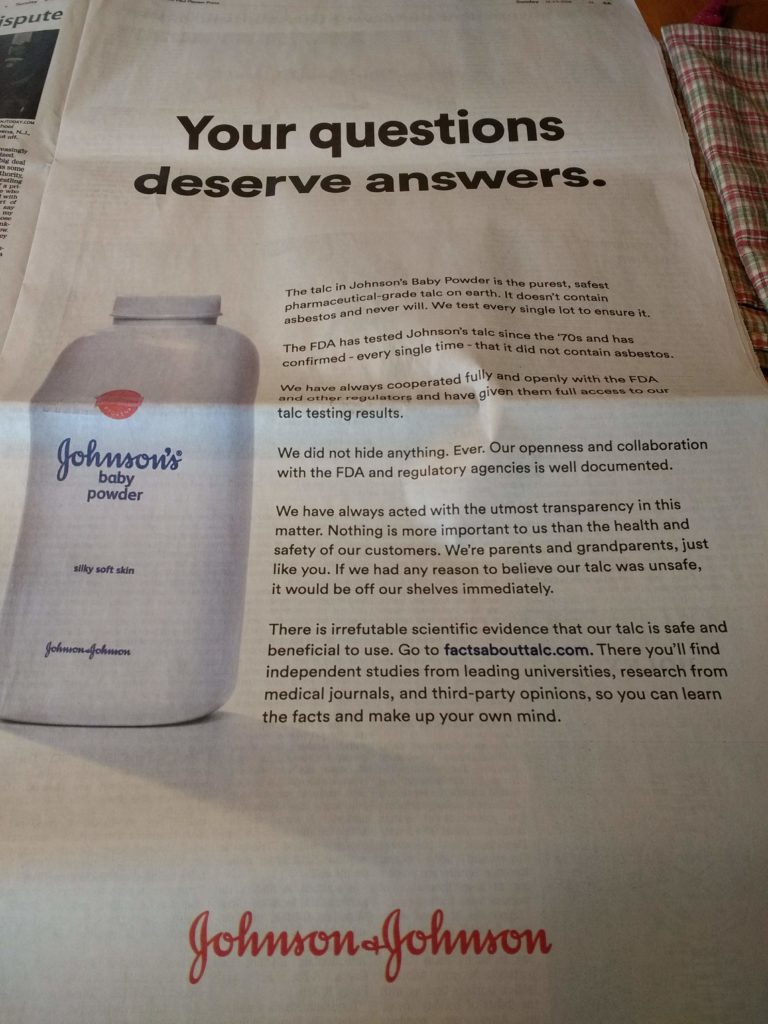
The nationally known brand Johnson & Johnson is facing multiple charges after being accused of having asbestos in their baby powder products. The company faced a similar scandal around 36 years ago, but despite their experience with scandals, the Johnson & Johnson baby powder lawsuit is not shaping to be good for the company’s reputation.
In 1982, the Tylenol crisis became a groundbreaking case for crisis communication. After a total of seven fatalities from tainted over-the-counter Tylenol medication, Johnson & Johnson was obligated to make a statement in order to save its reputation. Because the suspect was unidentified, the company was in a higher position to clear its name. To do this they created a crisis line for consumers to call if they had concern about their products, in addition to paid advertising about the crisis and press conferences about their new sealed packaging. This combination of journalism, public announcements and solutions has continuously been used as the model for brands to handle a crisis situation.
This time around however, circumstances are different. The brand may not be capable of having the same success as it did with the Tylenol crisis. The factors that make the Johnson and Johnson baby powder lawsuit different from the 1982 case revolve around: their previous statements mentioning no asbestos in their products, the several people that have come forward with an issue and plan to sue, and specific lawyers involved. Reuters wrote an article stating that company had suggested their awareness of the use of raw talc and asbestos in their product dating back from the 1970s to the 2000s. Unlike the Tylenol case, Johnson & Johnson has not addressed this statement specifically, but instead has targeted Reuters, attacking the media outlet’s credibility. Along with this statement, Johnson & Johnson is facing lawsuits in 2019, and many have predicted that this number will only increase after the proceedings. Women specifically have linked the use of raw talc to ovarian cancer. This year alone, the company has spent $4.69 billion paying the 22 alleged victims. In addition to this, lawyer Mark Lanier will be representing multiple plaintiffs. The lawyer has worked against Johnson & Johnson in the past, including the suit regarding the $4.69 billion verdict, as well as other medical cases.

While Johnson & Johnson is on the right track to saving their brand reputation, their stock price has plummeted and the company has received an immense amount of wrath on social media. In order for Johnson & Johnson’s current consumers to remain trusting the brand, the company must continue to look back to their crisis in 1982 and develop a similar plan for the Johnson and Johnson baby powder lawsuit. They are currently working toward spreading their viewpoints and assuring the public that their product is not harmful. However, with the lawsuits and articles written by witnesses, the public is going to have a hard time trusting their product.
To read more about how Johnson & Johnson’s Tylenol crisis is a model for crisis communication, click here.
